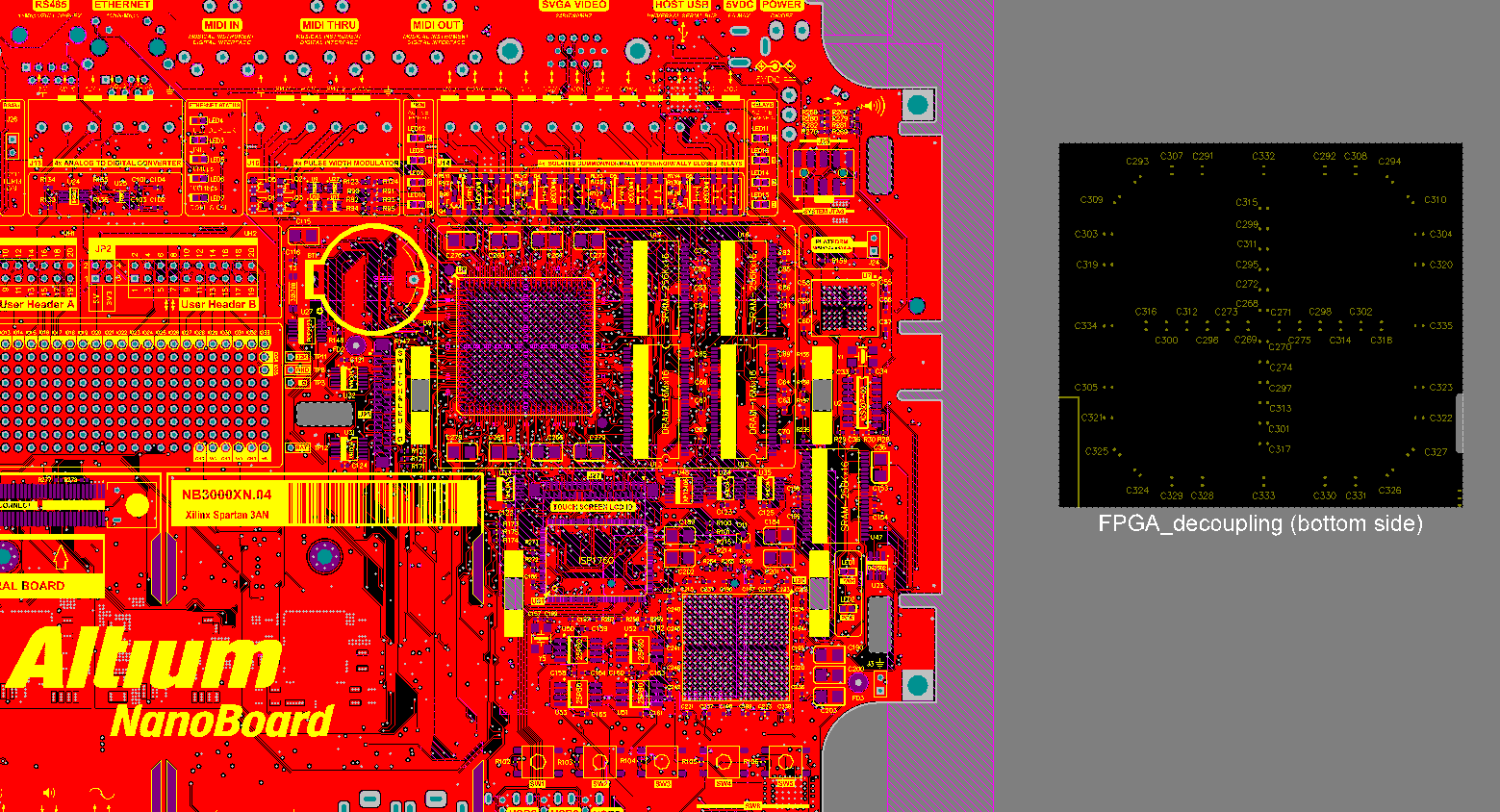PCB Development Path




To open an Altium Designer PCB document in CircuitStudio do the following: In Altium Designer Save your PCB as a PCB 5.0 binary file. Do this by going to file save as from the pulldown menu choose PCB5.0 Binary In CircuitStudio go to file import and choose the PCB5.0 binary file you just created. Re: Generate schematic from PCB file, Altium « Reply #1 on: November 22, 2017, 03:59:46 am » I know of very few tools which can create schematics from netlists (and when they do, they're terrible, because they don't understand how to place components on a schematic - a difficult problem akin to PCB placement and routing, after all). Then import it via: File - Open - Altium EasyEDA offers an excellent experience in importing Alitum Designer's Schematic and PCB as you can see from the image below of a schematic imported from Altium Designer: If your schematic and PCB are Protel 99se format files, please open at Altium Designer and save as ASCII format, and then import them.
Altium Pcb Design Software

To open an Altium Designer PCB document in CircuitStudio do the following: In Altium Designer Save your PCB as a PCB 5.0 binary file. Do this by going to file save as from the pulldown menu choose PCB5.0 Binary In CircuitStudio go to file import and choose the PCB5.0 binary file you just created. Re: Generate schematic from PCB file, Altium « Reply #1 on: November 22, 2017, 03:59:46 am » I know of very few tools which can create schematics from netlists (and when they do, they're terrible, because they don't understand how to place components on a schematic - a difficult problem akin to PCB placement and routing, after all). Then import it via: File - Open - Altium EasyEDA offers an excellent experience in importing Alitum Designer's Schematic and PCB as you can see from the image below of a schematic imported from Altium Designer: If your schematic and PCB are Protel 99se format files, please open at Altium Designer and save as ASCII format, and then import them.
Altium Pcb Design Software
Each new project includes a new solution, new details, and new compromises to which the engineer MUST pay attention. In order to get the results closer to the ideal, the designer of the future device must make proper calculations, imagine the consequences of decisions made, compare different device configurations and, finally, make the right choice. Altium Designer offers a complete set of tools allowing the engineer to follow the PCB development path without leaving the design environment and without resorting to third-party programs. From the beginning of the project to its completion, the designer must perform many operations related to each particular stage of the development path. From these stages, as from the blocks, a typical design path is built.
Altium Pcb Library
The development path of every PCB always starts with creating a new project in which the design of the schematic and board will be carried out and synchronized. At this point, it is assumed that a library is created and placed in your repository. In this guide, you will use the existing library of managed components. After the project is created, work starts on the electrical schematic design on which the components are placed and their interconnections are defined. The Electrical Rules Check (ERC) design rules will be checked several times while working on the schematic, and once completed, the project will be compiled. The next step contains all the work related to PCB design. This step includes forming the board shape, creating a layer set (stackup), synchronizing with the schematic, design rules definition, components placement, routing, and much more. During PCB design, all rules such as Design For Assembly (DFA), Design Rules Check (DRC), and Design For Manufacture (DFM) are checked online, all of which help decrease errors and problems. After the PCB is completely designed and error-free, the documentation development stage begins including exporting the Bill Of Materials (BOM) exporting, creating assembly drawings, etc. The final step of the PCB development path is uploading files for the manufacturer to create a printed circuit board that will be used to create a finished device. These are the steps necessary in a typical PCB development path.

